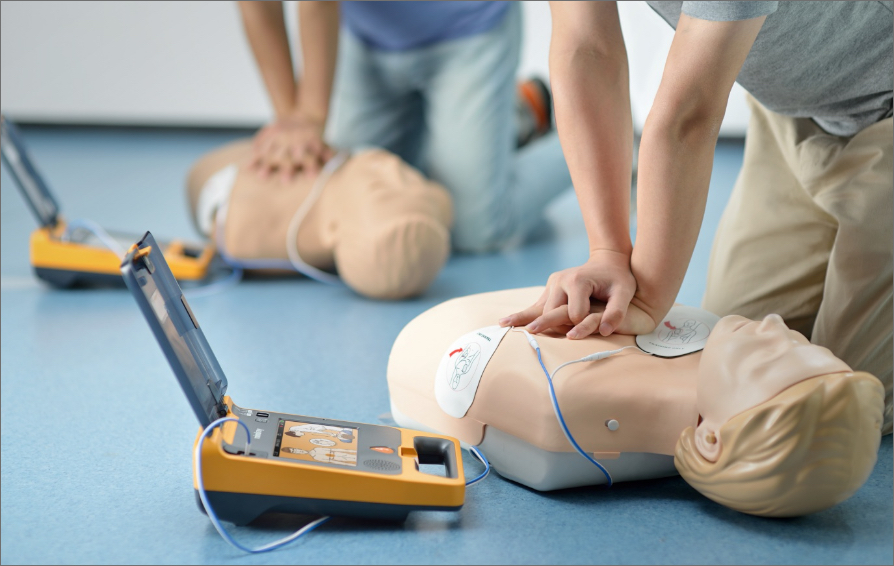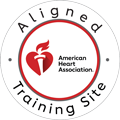Sudden cardiac arrest can strike anyone, anywhere, at any time. In those critical moments, having access to the right equipment—and knowing how to use it—can mean the difference between life and death. One of the most important tools in these emergencies is the AED. But what does AED stand for, and why should everyone know how to use one? As a leading American Heart Association (AHA) training site, CPR Kansas City is committed to educating the public about lifesaving techniques, including CPR and AED use. Understanding what an AED is and how to respond during a cardiac emergency is an essential part of building a safer, more prepared community.

What Does AED Stand For?
AED stands for Automated External Defibrillator. Let’s break that down. “Automated” refers to the device’s ability to function with minimal human input. It analyzes the heart’s rhythm and determines whether a shock is necessary—all without requiring the user to make medical decisions. “External” means the device is used outside the body, with electrode pads that attach to the person’s chest. Finally, “Defibrillator” refers to the shock it delivers to stop a dangerously abnormal heart rhythm, such as ventricular fibrillation, allowing the heart to potentially restart in a normal rhythm. AEDs are designed to be used by laypersons with little or no medical training, making them vital tools in public health.
When Should You Use an AED?
Knowing when to use an AED is just as important as knowing what it stands for. AEDs should be used on individuals who are unresponsive and not breathing normally, which are classic signs of sudden cardiac arrest. In these situations, time is critical. If CPR is already in progress, deploying an AED as soon as it’s available should be the next priority. The American Heart Association emphasizes that every minute without defibrillation reduces a person’s chance of survival by approximately 7 to 10 percent. That’s why having an AED close at hand—and knowing how to use it—can save lives.
What Is the 3 Minute Rule for an AED?
This urgency leads us to the widely recognized “3-minute rule” in cardiac arrest response. The goal is to deliver the first shock from an AED within three minutes of the person’s collapse. Reaching this milestone dramatically increases the likelihood of survival and recovery. However, this is only possible when AEDs are accessible and individuals are trained to act quickly and confidently. At CPR Kansas City, we emphasize this golden window during training, empowering students to respond effectively in those first few minutes when it matters most.
Where Should an AED Be Used?
Where AEDs are located plays a crucial role in making that 3-minute goal achievable. High-traffic areas like gyms, schools, airports, shopping malls, and sports arenas are all common places where cardiac events may occur and where AEDs should be readily available. Workplaces, community centers, and places of worship also benefit from having AEDs on hand, especially when large groups gather. Even private homes—particularly those where someone has a history of heart disease—can benefit from having an AED readily accessible. CPR Kansas City works to raise awareness about the importance of AED placement in all of these environments, offering consultation and training to help businesses and families stay prepared.
When Using an AED, What Is the First Step?
When you do have to use an AED, the first step is simple: turn it on. From that moment, the device will guide you through each step with clear voice prompts. You’ll be instructed to expose the person’s chest, apply the electrode pads, and stand clear while the AED analyzes the heart rhythm. If a shock is advised, the AED will prompt you to press a button to deliver it, after confirming that no one is touching the person. These user-friendly instructions are part of what makes AEDs so effective in the hands of bystanders with minimal training.
Call Us Now
Get the Best CPR Class in Kansas City Today!
Why AED and CPR Training Matters
Of course, using an AED becomes much more intuitive and less intimidating with proper training. That’s where CPR Kansas City comes in. Our hands-on courses ensure that both healthcare professionals and everyday citizens are fully prepared to respond to cardiac emergencies. Training includes realistic simulations, guided instruction, and ample time to practice critical skills like CPR and AED use. By becoming certified, participants not only meet professional requirements but also gain the confidence to make a difference in real-life situations.
Conclusion
The importance of AED awareness, access, and training cannot be overstated. Cardiac arrest can happen to anyone—at home, at work, or out in public—and every second counts. Learning what AED stands for is just the first step. Being able to use one correctly and confidently is what truly saves lives. If you’re ready to take that next step, CPR Kansas City offers certified, stress-free training in a welcoming environment. Whether you’re a medical provider, a teacher, a coach, or simply someone who wants to be prepared, our team is here to support your journey toward becoming a lifesaver.
To learn more or to schedule a class, visit CPR Kansas City today. Join a community that’s committed to making Kansas City safer, stronger, and ready to respond when it matters most.


